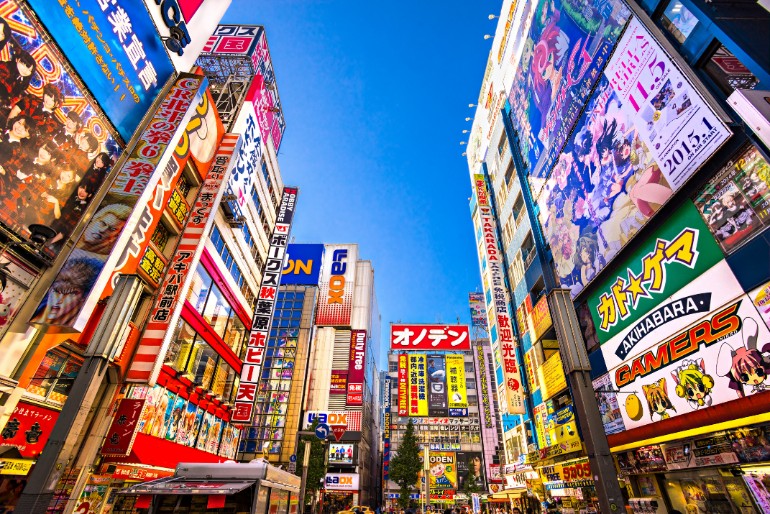One of the first and most challenging obstacles organizations face when expanding into the Japanese market is the language and cultural barrier. You may have a winning brand and promotional strategy for your home territory, but connecting with your new audience will require much more than simple translations from one language to another.
To truly succeed, a great deal of commitment and creativity should be applied to finding the best way to convey your important messages. In this post, we explore some best practices, pitfalls, and tips for avoiding embarrassment when it comes to Japanese marketing translation, brand localization, and transcreation.
Why Is Japanese Marketing Translation So Important?
A full understanding of the local context and consumer expectations is paramount when trying to break into Japan, regardless of your product type or sector.
Low English Proficiency
Despite the English language being taught to all children in junior high and high school, Japan has one of the lowest English proficiency levels when compared with other developed nations. Proficiency is typically limited to basic reading and writing, and a more academic or colloquial grasp of English is only achieved by a modest portion of the population. As a result, you’ll find almost all written communication in the country in Japanese.
This isn’t to say that using the English language isn’t sometimes effective, or desirable. A number of Japanese brands intentionally use it as a way to add a foreign or “exotic” element to their brand. However, if you’ve spent a significant amount of time in the nation, you’ll probably have witnessed your fair share of “Engrish” marketing slogans that don’t quite make complete sense for native English speakers.
Nevertheless, the point is that relying on English to convey your important marketing messages to Japanese people can only get you so far. If you want to really connect with your new consumer base and show them you’re here to stay, you’ll need to wield the local language to a high degree.
Japanese is a Complex Language

Japanese has a completely separate linguistic origin to English and is an incredibly difficult language to master. Many words in one language have no direct translation in the other, or can sometimes convey a wildly different concept than what you’d hoped for. A few other issues include:
- The Japanese language is highly subjective and terms and phrasing can differ depending on context, or which generation you are speaking to.
- The word order in Japanese is opposite to English, therefore all sentences will always need to be restructured when translating.
- There is a close link between the language and the culture of expressing politeness. Depending on who you are speaking to, or about, you must adapt your degree of humility by using different forms of speech.
- Japanese has little flexibility when it comes to conveying meaning. In contrast to other languages where countless variations can be used to communicate single ideas, even small deviations from the correct version can lead to confusion with Japanese speakers.
- The Japanese language has three character sets: hiragana, katakana, and kanji.
- Japan has distinct formats for displaying common data like dates, time, currency, and addresses. Getting this wrong on your ecommerce platforms, for example, can cause a great deal of confusion for prospective customers.
HB Pro Tip: If you’re unable to convey the right tone of politeness, your marketing copy can end up appearing overly dry, formal, and potentially boring. However, going the other way can be equally detrimental if your slogans or phrases appear too brash, rude, or direct. With more ways to achieve nuances of tone, finding a balance can be hard, but it’s something all brands need to do well.
Learn More About Localization and Sales on E-Commerce Websites in Japan
Building Trust is Crucial
Japan ranks extremely low in terms of trust in business and media institutions. It is also a nation where spending a little more on products from a well-known and recognisable brand is preferable to choosing something purely based on price alone.
As such, businesses should expect that most Japanese consumers will take longer to win over, and building trust with them through a keen grasp of the local language and culture is one of the most important things you can do.
Accuracy Represents Quality
Many have commented (including ourselves) on the ‘demanding’ nature of Japanese customers when it comes to quality. There are various explanations for this, but the important thing you need to know as an inbound business is that you’re likely to face higher scrutiny from prospective customers.
Accurately conveying your messages and avoiding translation blunders is one of the first things you can do to ensure you’re not disregarded as a low quality brand. This is true whether you’re building a website or implementing a PPC campaign. You need to ensure quality across all your customer touch points to stand out today and compete against others in your space.
Building a Japanese PPC Campaign? Here’s Some Advice.
Benefits of Good Japanese Marketing Translation

There are several benefits to ensuring good Japanese marketing translation and localization. Some are obvious, while others less plain to see at first.
Develop Stronger Relationships with Customers
Today, reaching your core demographic and selling your product requires you to build opportunities for greater interaction with your customers. Marketing content is primarily a way to communicate your company’s message and your product’s value, but it’s also an invitation for your customer to engage with you in a two way conversation.
More and more, Japanese businesses are releasing this and focusing on creating online spaces where people can share ideas, feedback, and engagement. All of this is incredibly important for inbound businesses, and none of it is possible if you’re not conveying your core brand messages and marketing output with the utmost accuracy.
For your audience, getting this right is a commitment from your brand that you care. Getting it wrong can result in your followers losing interest.
Marketing content is primarily a way to communicate your company’s message and your product’s value, but it’s also an invitation for your customer to engage with you in a two way conversation.
Convey the Right Information
We all want to know more about the products and brands we buy from. We also love reading testimonials from other shoppers. This is somewhat true for most consumers around the world, but Japanese shoppers in particular crave a vast quantity of information before buying a product. You can see this concept everywhere from websites and social media pages to large billboards or TV commercials, which pack in a huge amount of information into a small space.
A lack of information, or even worse, false or confusing information about your brand is a great way to steer customers away. If they have some unanswered questions about what you offer and how your products work, it’s easy for them to look elsewhere. Make sure you understand what your audience wants to know and provide it to them in the clearest and most convincing way possible.
Avoid Damage to Your Brand and Reputation

Effective Japanese marketing translation and localization not only gives you a better chance of reaching customers, but it also prevents them from being unhappy, going elsewhere, and telling others about their dissatisfaction. Whether it’s your promotional copy or follow up customer service, making sure your content is 100% localized and translated will help you to avoid damage to your brand and reputation.
More Effective SEO and Content Marketing
If high online visibility is on your list of priorities, it goes without saying that your Japanese SEO strategy needs to be on point. As searches in Japan are predominantly made in Japanese, you’ll obviously need to focus on building an original Japanese language strategy to effectively tick all the important SEO boxes and drive traffic and conversions through your site.
HB Pro Tip: It’s okay to borrow similar themes and messages of your English SEO strategy when operating in Japan, but we advise that you also approach this endeavour with fresh eyes. Get a skilled team of native Japanese speakers to brainstorm new ideas, keywords, and other SEO opportunities. Don’t simply translate your approach from your home market as you’ll be missing out on huge opportunities to leverage the Japanese language to your advantage.
Lean More About Our SEO Marketing Services for Japan
Best Practices for Japanese Marketing Translation

1. Understand Context
Compared to other languages, the ‘subject’ is always important in the Japanese language. As well as determining how sentences should be structured, it can seriously impact the way meaning is conveyed. If you’re not able to organize syntax effectively, or can’t frame your marketing content with the right subject indicators, your content could be incredibly confusing or simply inaccurate.
2. Go Beyond Translation
Good Japanese marketing translation on its own isn’t enough. That’s why many marketing agencies like our own will stress the importance of terms like localization or transcreation as indispensable components of a holistic marketing strategy.
Localisation is about understanding the intended meaning of a text, and adapting it so that it has the same effect in a different language. This could mean completely removing words in order to translate the overall concept or idea sufficiently. It also considers things like tone (excitement, passion, humour), formality (polite, direct), format (horizontal, vertical), and audience (young, old). To get this right, many successful brands localize their whole brand for Japan, rather than just individual pieces of marketing content.
3. Embrace Transcreation
Similarly, transcreation is the process of thinking creatively about how you can achieve the same intended impact from one culture and language in another, by allowing terms, phrases, and ideas to be adapted and transformed so that sometimes new approaches evolve. This could mean creating new slogans, messages, or graphic content that builds a new persona for your brand in Japan.
It may be a bit more challenging due to linguistic and cultural considerations, but transcreation is one of the best ways to ensure people are connecting with your brand. After all, what’s the use of suitably translating your marketing taglines if they perform poorly in Japan anyway, it’s much better to put your creative hat on and consider new ways you can achieve the same thing.
Transcreation is the process of thinking creatively about how you can achieve the same intended impact from one culture and language in another.
4. Create for the Japanese User

Rather than trying to adapt your content for a new format or style, sometimes it’s better to create your content from scratch with Japanese users in mind. Doing so will help you to improve engagement and encourage Japanese customers to interact with your brand.
For example, a standard website in Japan might seem busier and more cluttered than your average website from an English-speaking country. And when building your own, you might be tempted to apply a Western-influenced aesthetic ideal to your web design, but is this going to help you achieve your goals?
Learn More About Translating Your Website for Japan
5. Cover the Details
Don’t underestimate the importance of detail. You should make sure that even the smallest aspects of your brand are handled sensitively by those who understand the local market well. Whether it’s your marketing taglines or the layout of your Japanese ecommerce storefront, Japanese consumers often weigh their decisions carefully based on the small stuff.
6. Hire Native Japanese Speakers
Japanese marketing translation and localization support can vary massively in terms of offerings and quality. There exists a varied scene of internationally facing agencies with robust teams of Japanese native speakers on hand to support your brand. Yet, there are also a number of companies and services that only offer smaller-scale and isolated translation support.
If your budget is tight, you might be tempted to go with the second option, but be careful you know what you’re getting into. An accurate translation can be effective when used well, but it can often be disconnected from your wider marketing output and brand identity in Japan. If you want to achieve the impact in Japan your brand needs to secure considerable presence, make sure you’re always working with native Japanese speakers who have existing experience navigating cultural nuances and language barriers for international brands.
Dangers of Poor Japanese Marketing Translation and Localization

We’ve heard more than a few translation horror stories in our time. If you’re lucky, someone in your team will notice any embarrassing mistranslations or localization mistakes before they go out, but sometimes you won’t be able to catch these slip ups before they go public. The consequences can be severe.
- Delay in the launch of a campaign, website, product, or print media, resulting in extra time and money spent correcting problems
- Fines for inaccurate descriptions when working in finance or health sectors
- Loss of credibility with partners and shareholders, putting your financial backing at risk
- Inaccurate data and the inability to make important business decisions based on what works and what doesn’t for your marketing campaigns
- Poor feedback from users who write testimonials or comment on your social media, damaging your brand’s reputation among your audience
- Customers request refunds because product information is inaccurate
- You upset or disappointed a loyal customer base
Kickstart your Japanese Marketing Translation Strategy
Cross-cultural marketing and communication isn’t easy. While the great opportunities to be found in Japan make it worth the challenge, various obstacles such as language barriers and vastly different cultural contexts can add stress to an already stressful process.
To operate effectively in Japan, it’s important to work with native Japanese speakers with existing experience in bringing foreign brands and concepts to this new and exciting market, helping you to align your brand voice with the motivations and preferences of your new customers.
By following some best practices for translation and working with agencies that adhere to high quality control procedures, you can reduce the risk of offending your audience, damaging your reputation, and losing precious time and money.